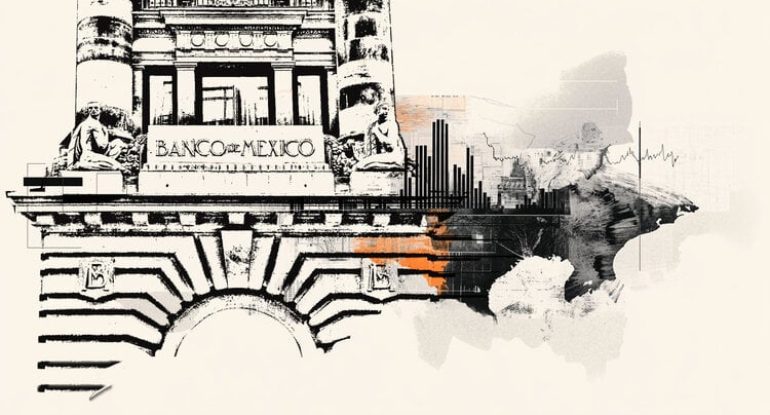Banxico Signals Further Easing on Economic Slowdown

- Banxico signals a softer economy and easing inflation concerns, strengthening expectations for further interest rate cuts.
- Despite global market swings, Banxico noted healthy trading of the Mexican Peso and better market liquidity.
- For USD/MXN, watch out for a potential drop to 20.00 if it breaks below 20.30; a move above 20.50 is needed for any upward momentum.
Just this past Thursday, April 10th, Mexico’s central bank, Banco de Mexico (Banxico), gave us a peek into their latest meeting discussions. The minutes revealed that all members agree: the Mexican economy is cooling down while inflation is also easing. This combination is opening the door wider for Banxico to consider even more interest rate reductions.
Key takeaways from Banxico’s meeting:
Looking ahead, the board suggests they’re ready to continue fine-tuning their monetary policy, hinting at possible adjustments of a similar scale moving forward.
Most members pointed out that they anticipate the economy will likely experience more slack in the near future.
A majority of the board observed that trading conditions for the Mexican Peso remained stable, and actually improved in certain aspects during the period.
The majority also indicated that when it comes to economic activity, the risks are leaning more towards potential downsides.
Most members highlighted that the risks of inflation falling more than expected have become more prominent.
According to most on the board, the anticipated slowdown in economic activity, coupled with increased slack, should help keep the disinflation process going.
One member noted that early estimates for February suggest that the economic contraction may have continued into that month.
The scenario of the US imposing high and permanent tariffs on all imports from Mexico is considered unlikely to actually happen.
USD/MXN Price Technical Outlook: What to watch
While the USD/MXN still seems to be leaning upwards overall, a dip below the 20.30 level could set the stage for further declines. Keep an eye on the 20.00 mark as the next significant support, followed by the 200-day Simple Moving Average (SMA) around 19.83. If it drops below that, 19.50 could be the next stop. On the flip side, for buyers to regain control and push for an upward trend, they’d need to break through the 20.50 area, with 21.00 being the next target to watch.
Banxico FAQs
Ever wondered about Banxico? It’s simply the Bank of Mexico, the central bank for the country. Their main job? To keep the Mexican Peso (MXN) stable and valuable, and they do this by managing monetary policy. Essentially, they aim to keep inflation low and steady, ideally around 3% – that’s their target, give or take a percentage point.
So, how does Banxico actually control things? Their primary tool is setting interest rates. If inflation is too high, they’ll try to bring it down by raising rates. This makes borrowing more expensive for people and businesses, which helps cool down the economy. Generally speaking, higher rates are good for the Mexican Peso because they attract investors looking for better returns. On the other hand, lower rates tend to weaken the Peso. A key thing to watch is the difference between Mexican and US interest rates, and how Banxico and the US Federal Reserve (Fed) are expected to move rates.
Banxico’s meeting schedule? They gather eight times a year, and their decisions are often influenced by what the US Federal Reserve (Fed) does. Typically, Banxico’s policy meetings happen about a week after the Fed’s. This allows them to react to, and sometimes even anticipate, the Fed’s monetary policy moves. For instance, after the Covid-19 pandemic hit, Banxico actually raised rates before the Fed did, trying to prevent a big drop in the Peso and avoid capital flowing out of Mexico, which could destabilize the country.










